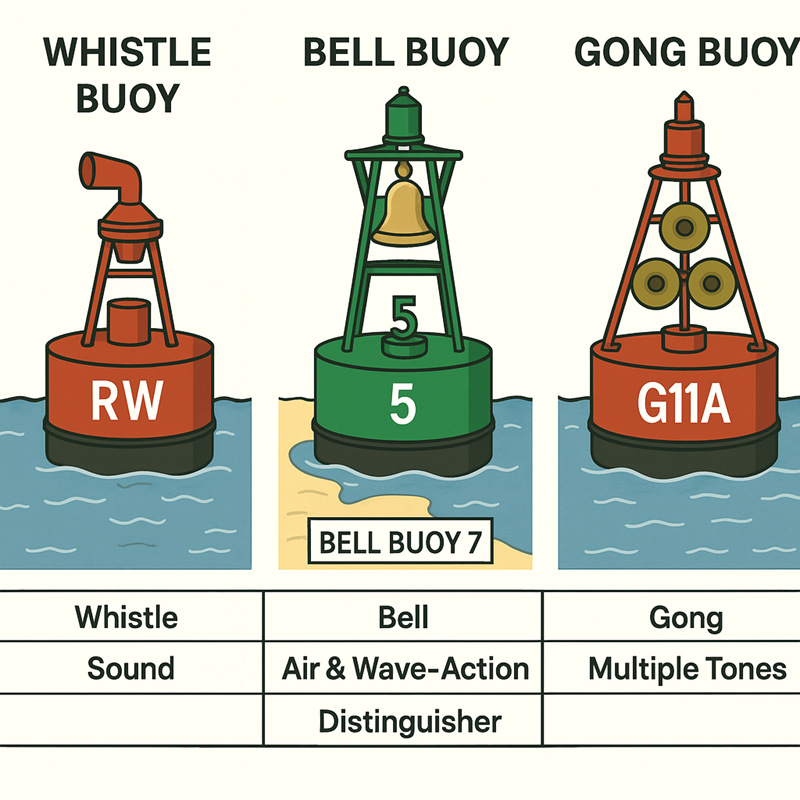In marine navigation, visibility is not always guaranteed. Fog, heavy rain, or nighttime operations can make it difficult for vessels to rely solely on visual signals. That’s where sound buoys come in—providing audible signals to guide ships safely through coastal waters, ports, and narrow channels.
Among the most commonly used sound buoys are the whistle buoy, bell buoy, and gong buoy. Each type has a distinct structure and sound mechanism, and understanding their differences can significantly enhance navigational safety.

1) Whistle Buoy
Sound Type: High-pitched whistle
Mechanism: Air-driven; powered by wave motion
Use Case: Often found in open sea routes or near hazardous zones, these buoys emit a loud, unmistakable sound when waves pass through the whistle opening.
Example: Marked as “RW ‘WH’” on nautical charts, especially around U.S. coastlines.
2) Bell Buoy
Sound Type: Deep bell tone
Mechanism: Wave-induced swinging arm strikes a bell
Use Case: Common near anchorage areas, harbor entrances, and shallow waters. The sound is rhythmic and resonant, perfect for identifying specific zones.
Example: “Bell Buoy 7” is often seen near port access points.

3) Gong Buoy
Sound Type: Multiple tones (gong-like)
Mechanism: Several gongs struck by moving arms
Use Case: Ideal for areas with multiple buoys in close proximity. The varied tones help sailors distinguish one buoy from another by sound alone.
Example: “G11A Gong Buoy” used in high-traffic or complex marine areas.
Why These Sound Buoys Matter?
Each sound buoy serves a vital role in marine safety. They:
-- Enhance navigation in low visibility
-- Reduce the risk of collisions
-- Serve as secondary confirmation alongside visual aids
By knowing what each sound means, mariners can safely and confidently navigate even in the toughest conditions.
Want to Learn More About Our Buoys?
We offer a range of navigation buoys compliant with IALA standards, including whistle, bell, and gong configurations. Whether you need guidance equipment for a harbor, offshore site, or coastal project—contact our team for a tailored solution.